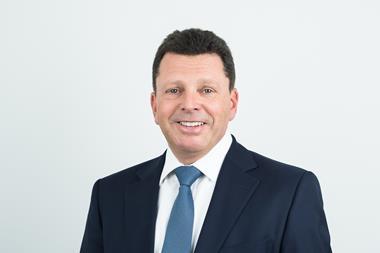Inarcassa, the pension fund for self-employed engineers and architects in Italy, has increased directly held equity investments in Italian private banks to €200m to benefit from the increase in interest rates, it said in a statement.
At the end of the year, Inarcassa held equity investments in Banco BPM, Intesa SanPaolo and Banca Monte dei Paschi di Siena, making up 22% of the equity portfolio of the scheme.
Its strategic asset allocation includes a specific component for government bonds and equity investments in Italy totalling €800m, or 7.2% of total assets under management.
Despite market volatility and the recent banking crisis, in the first quarter of this year Italian lenders showed good resilience, with a number of Italian banks included in the list of the most solid credit institutions published by the European Central Bank, the scheme said in the statement.
Inarcassa holds positions in banks looking at an operational and financial mechanism, where the increase in revenues has a direct impact on profitability, remaining positive towards these types of investments, provided that balance sheets remain solid, it added.
Last year, the board of directors of the scheme tweaked its portfolio allocations by investing in Chinese government bonds in domestic currency through exchange-traded funds (ETFs) for approximately €20m, with a view to further diversifying its bond portfolio, and in Italian government bonds indexed to inflation, it said.
It has also increased its allocation to bonds by 3%, reducing equities by 1.5%, and absolute return/real investments by 2%, against a slight increase in real estate assets (1%).
In times of great uncertainty, the pension fund tends to reduce high-yield investments in favour of “safer investments” reacting less to market volatility.
Government bonds are an example of this, both in the case of inflation-linked and nominal treasury bonds mainly as a result of last year’s rise in yields, the statement added.
Inarcassa returned -8.42% last year on invested assets at gross market value, hit by a correction in bond markets contributing, net of tactical hedging, by around 67% to the overall negative result, with a marked underperformance in Italy (-25.9%).
The equity component contributed approximately 38% to the negative result for the year, recording a -12.7% in the 12 months of 2022, with emerging markets equities returning -22%. However, the largest, negative contribution to last year’s negative results came from US equity funds.
Investments in private equity, private debt and infrastructure made instead a positive contribution of 0.7% to the overall results. Inarcassa allocated €515m in private markets funds in Italy and abroad last year, with private equity, debt and infrastructure investments totaling €2bn now, against approximately €3bn commitments, across approximately 130 domestic and international vehicles, it said.
For 2023, Inarcassa plans to increase investments in private markets and real estate, selecting new funds and maintaining a tactical overweight position compared to targets set in its strategic asset allocation.
At the end of April, Inarcassa had assets under management above €12.8bn, up by more than 3% compared with the amount recorded at the end of 2022.
Looking at trends for this year, Inarcassa is spotting investment opportunities in technology and innovation in addition to renewable energy.
“We already know that companies operating in the renewable energy sector, such as solar, wind and hydroelectric energy, are set to grow significantly in the coming years,” the scheme said, adding that the transition to clean energy sources is accelerating, driven by the need to reduce pollution and mitigate climate change.
In Italy, the pension fund invests 6% of its asset in cash, 12% in government bonds, 7.1% in equities, 8.5% in real assets, and 15% in real estate, while the remainder is invested abroad (51.4%), according to the statement.
The latest digital edition of IPE’s magazine is now available


















